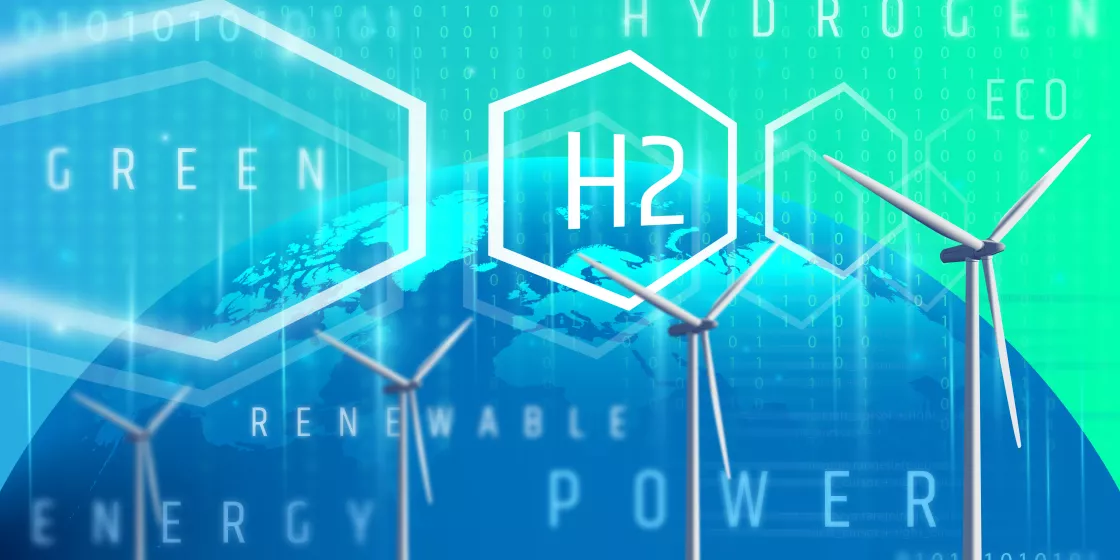The European Commission is focusing on hydrogen from renewable electricity, to accelerate the decarbonization of the various sectors and to achieve climate neutrality in 2050. What does this mean for the future of energy imports from Russia, currently the largest supplier of natural gas to the European Union? A chance, the authors of this background article find, and elaborate on challenges and first steps on how to leverage this opportunity.
Green hydrogen is set to play a central role in the efforts of the European Union and many EU member states to decarbonize different sectors in order to reach their 2050 climate goals. The hydrogen strategy adopted by the European Commission in July 2020 seeks to make green hydrogen an integral part of Europe’s energy system by 2050. In particular, the strategy emphasizes the potential of green hydrogen in sectors where direct electrification is a challenge, including energy storage, heavy-duty transport, aviation, shipping, and energy-intensive manufacturing. However, in order to enable a market ramp-up for hydrogen, low-carbon hydrogen derived from fossil fuels is also being considered as a production option alongside green hydrogen.
Electricity generation from renewables in Europe would have to increase dramatically in order to allow for the required green hydrogen supply. So far, some 30% of the EU’s power mix stems from renewable sources. Current plans to expand renewables focus on meeting demand in the power sector, with little surplus electricity destined for hydrogen production. Significant hydrogen imports will thus be necessary to supplement domestic supply in order to meet the future European hydrogen demand. With this in mind, Europe’s leading association for hydrogen energy, Hydrogen Europe, has developed a plan together with industry associations from Ukraine and North Africa, which foresees the installation of 40 GW of electrolyzer capacity for the production of hydrogen in Europe and another 40 GW in neighboring countries by 2030.
The energy cooperation between the EU and Russia could also benefit from the opportunities hydrogen brings about. Russia is currently the most important supplier of energy to the EU. In 2018 it accounted for 40% of the EU’s natural gas imports, 42% of coal imports and 30% of crude oil imports. Energy exports make up about half of Russia’s state revenues. In consequence, the Russian government considers declining foreign energy demand as a threat to its economic security. The European Green Deal – which seeks to pave the way to climate neutrality by 2050 – has underscored that the EU takes climate protection and the energy transition seriously and will rapidly reduce its demand for fossil fuels. For instance, in a recent study the German Environmental Agency predicts that domestic natural gas demand in Germany (the largest consumer of natural gas in the EU) will fall about 90% up to 2050. In this context, the export of climate-friendly hydrogen to the EU could constitute a promising future option for Russia.
Russia: A potential green hydrogen supplier?
It is beyond doubt that Russia has the potential to be a major player in the production and export of hydrogen. Russia is currently producing more than two million tons of hydrogen annually, albeit mainly through steam reforming of natural gas. In addition to that expertise, many decades of working with hydrogen in the context of military and space research as well as hosting the world’s most advanced gas transportation infrastructure add up to Russia’s advantage. Green hydrogen could be produced in Russia in large quantities, as well, given the country’s enormous endowment of wind and solar resources. Renewables production could be particularly cost effective if located close-by the Arctic Ocean or Black Sea, among other locations.
However, one obstacle to the large-scale export of green hydrogen is that Russia has made little progress in expanding renewables and the government has no long-term development targets. That said, the share of wind and solar in the Russian electricity mix is foreseen to jump up to 4.5% by 2024, from the current 0.15%. While Russia ratified the Paris agreement in 2019, its climate policy has been deemed “critically insufficient”. The country’s energy strategy continues to assign only a minor role to renewables. Hydrogen, by contrast, is now top of the Russian government’s agenda, with plans to export two million tons of hydrogen by 2035.
However, Russia’s hydrogen roadmap primarily aims to develop production capacities in “yellow hydrogen” (which is produced from nuclear power) and “turquoise hydrogen” (which is produced from natural gas). Turquoise hydrogen is manufactured using molten metal pyrolysis, which separates natural gas into hydrogen and black carbon. This process does not release carbon dioxide into the atmosphere but is still at an early stage of development. In addition, in the course of extracting and transporting natural gas, significant methane emissions occur. The option of green hydrogen is given only a cursory mention in the Russian roadmap. Gazprom – which has monopoly control over Russia’s pipeline network – is investing in turquoise hydrogen research but obviously aims to prioritize natural gas exports to Europe for as long as possible (while not ruling out the possibility of letting it be processed into turquoise hydrogen outside Russia). However, the company has not indicated whether it would be willing to export hydrogen in the future. It seems to still be pondering its strategic orientation in the area of hydrogen, and the company as well as the Russian government is probably especially open to clear signals regarding future demand from abroad.
The way forward: Recommendations for action
To enable cooperation between the EU and Russia on climate-friendly hydrogen and create incentives for corresponding investments, the EU will have to introduce clear and affirmative measures. The EU should communicate its import preferences with regard to hydrogen production processes and sustainability standards clearly and vocally to Russia. It could be helpful for the EU to consider working with Russia to develop a clean hydrogen certification system. Joint projects and research efforts could also be explored in the area of future transport and distribution infrastructure. No less important is the clarification of contractual and regulatory conditions that govern trade relations, especially given the sanctions currently in place against Russia. A sensible first step for the EU or individual member states would be to promote joint pilot projects along the entire supply chain. Projects that are also beneficial for Russian SMEs should be particularly encouraged. Such collaborative efforts could also test and should scientifically evaluate different production processes and transport options.
A key question for Russian planners will be Russia’s overall strategic positioning given the decarbonization efforts of the EU and other export markets (e.g. China). If the EU imposes the carbon border adjustment mechanism on imports, the pressure on the Russian economy to reduce emissions will increase significantly. Foreign demand for clean hydrogen will offer Russia an opportunity to introduce new business models based on renewable energy and Power-to-X products. These projects could tap into existing investments in the Russian natural gas sector, which would reduce the risk of stranded assets. Against this backdrop, the Russian government could encourage domestic demand for clean hydrogen, in order to mobilize investment in pilot projects and new technologies. The Russian steel industry, for example, holds great promise in this regard. Due to the local availability of natural gas, a significant share of Russian steel production has long been based on direct reduced iron (DRI) and not on blast furnaces, which are extremely harmful to the climate. As DRI plants can also run on hydrogen, they represent an excellent starting point for climate-friendly steel production.
Whether there is a future for EU-Russia energy relations will obviously depend in part also on the willingness of both sides to selectively engage with each other on the topic of hydrogen.
This article was produced in collaboration with Rainer Quitzow, Sonja Thielges, and Joschka Jahn of the Institute For Advanced Sustainability Studies (IASS) as a follow-up to the joint workshop "Hydrogen - A future-proof option for EU-Russia Energy Relations?" held on October 8, 2020. The article was published simultaneously on https://www.iass-potsdam.de/de/forschung/globale-wasserstoffwirtschaft.


